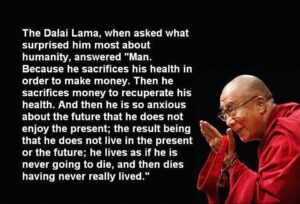Myofascial Stretching
Let Your Body Do Its Job

Your body has the innate ability to regenerate itself if you continually give it the proper conditions. Those conditions include adequate sleep and rest, sufficient hydration with good water, healthy nutritious foods, and an exercise program that allows your body space and pathways to work.
How the body renews itself
We’ll focus on the exercise component for this article. You have a process in your body called “Clast” and “Blast.” Clast is the dying/breakdown of cells, and Blast is the regeneration of cells. This breaking down and building up occurs in all the different types of bodily tissues, bone, cartilage, fascial, muscular, etc. This is where the statement came from that you “regrow” a body every 7 – 10 years came from. That is not totally true, but the body’s ability to regenerate is there for good or bad.
If your body‘s balanced and your fluid intake is on point, regeneration happens in the way most optimal for your body. If it is out of balance, those tissues will regenerate to adapt to your bad philological state. This is seen in Osteoarthritis. Two bones are touching and rubbing, causing inflammation and pain. And so, like a callus on your hand, the cartilage regrows adapting to this improper pressure making it “bumpy” and potentially leading to osteophytes.
What can you do to keep your body in a regenerative state
The easy answer is to keep your body balanced and not let anything touch. But that doesn’t just happen randomly; a conscious selection of exercises that work with the body is essential. If you choose incorrect movements, it will exacerbate the issue and reinforce the bad posture.
To balance the body use active stretches that realign the body along the myofascial chains and then use specific strengthening that work the particular muscle segments is critical. To keep the spaces in the joints open, you need an exercise that gives it space while strengthening it so it remains where it should.
As long as your body is still living and breathing, the Blast and Clast processes, as well as other innate systems, help your body regenerate and get and stay healthy and strong. By choosing the correct exercises, you can work with your body to remain as strong and flexible as possible.
it’s not just working out, it’s building a foundation for a better life.
Find out more @
Heart Health and Body Structure
I am sure you have heard a lot about heart health. Everything from diet, hydration, stress management, and even sleep affects your heart. There a lot of excellent points to follow, but have you ever thought about heart health and the structure of your body.
The structure of the body is usually talked about or thought about posture, movement, or pain. And all this is true. The better your structure, the better your position, the better you move, and the less pain you will have. But the structure of your body is fundamental to the health of your organs too. Your organs (viscera) all have a place that they are supposed to be within the body. They all have “rooms” formed by fascia (connective tissue). If the structure of your body is out of balance and your fascia is unhealthy, then space (room) holding your organs is compromised, and they cannot function optimally. It’s as if I were to ask you to perform a task but then bind your arms and legs to limit your movement. It’s going to be difficult, if not impossible, to accomplish.
Now to use your heart as an example. For it to be healthy and function optimally, the heart should sit properly on your diaphragm, and the pericardium (heart skin) should provide enough room and be able to connect correctly to the neck and sternum.
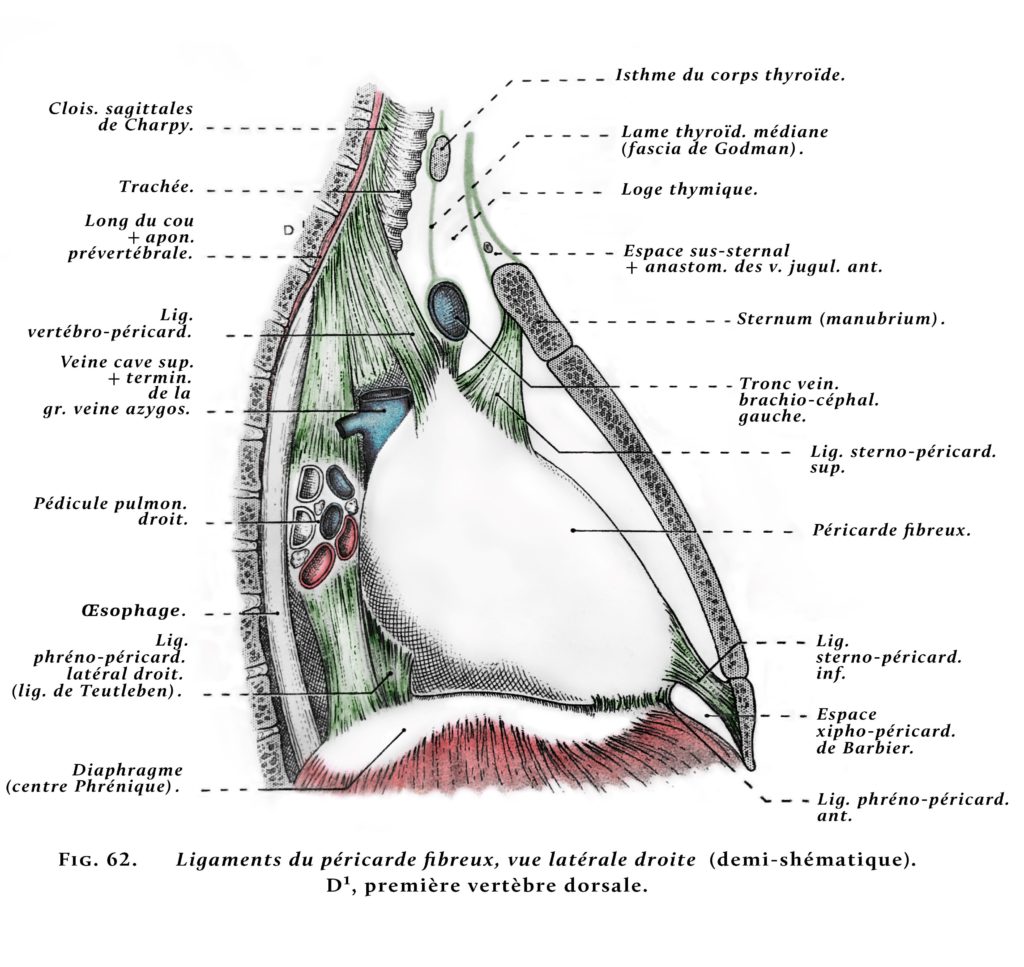
In this image (above), the pericardium (green) connects to the sternum (breast bone), C6, C7 and T1 vertebrae (neck), and the diaphragm for support. If any of those connections are tight or “out of place,” then it will twist, compress, or pull the pericardium and cause the heart to not work well.
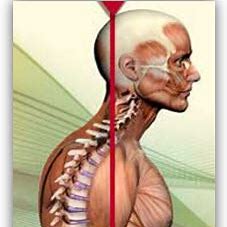
Take a typical posture that you can see everywhere now. It’s called forward head posture. And just as the name implies, your head is forward to your shoulders. This is usually seen with a rounded back (kyphosis) and a collapsed sternum. So take the picture of the heart above and place it in this poor chap. Let’s start at the top. When your head is forward, and you have kyphosis, it pulls your neck forward and causes those vertebrae to slide forward. It also creates those connections at the sternum to slack. And 9.99999999 times out of 10, this posture will also cause your diaphragm to be jumbled (technical name) and so the floor that the heart sits on is crooked and compressed.
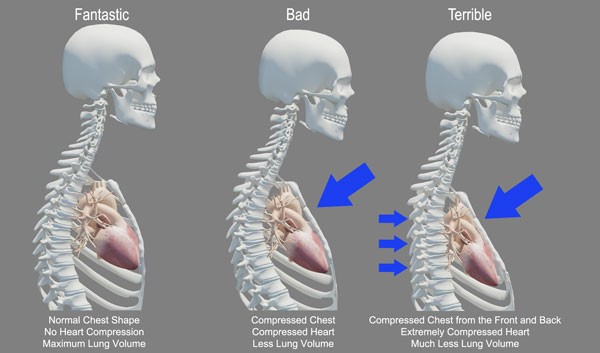
So now, your poor little heart is all twisted and compressed and sitting in the wrong place, and you are asking it to work optimally. Also, your posture is now reducing your lung volume, which reduces the amount of oxygen your body (including your heart) is getting. And now extrapolate that strain and think about the effects when you are exerting yourself. Talk about putting your body (and heart) in a position NOT to succeed.
If this represents your condition, the good news is that your current situation is not a death sentence because most of what I am talking about is soft tissue. This means you can do something about it if you don’t wait too long. Some exercises can open your neck and pull those vertebrae back into it’s intended position, and correct your kyphosis.
If your goal is longevity and vitality, then get on a workout treatment program that works on your body from all different angles, including your posture and structure. The benefits to your entire being are numerous… because it’s not just working out, it’s building a foundation for a better life.
Find out more @
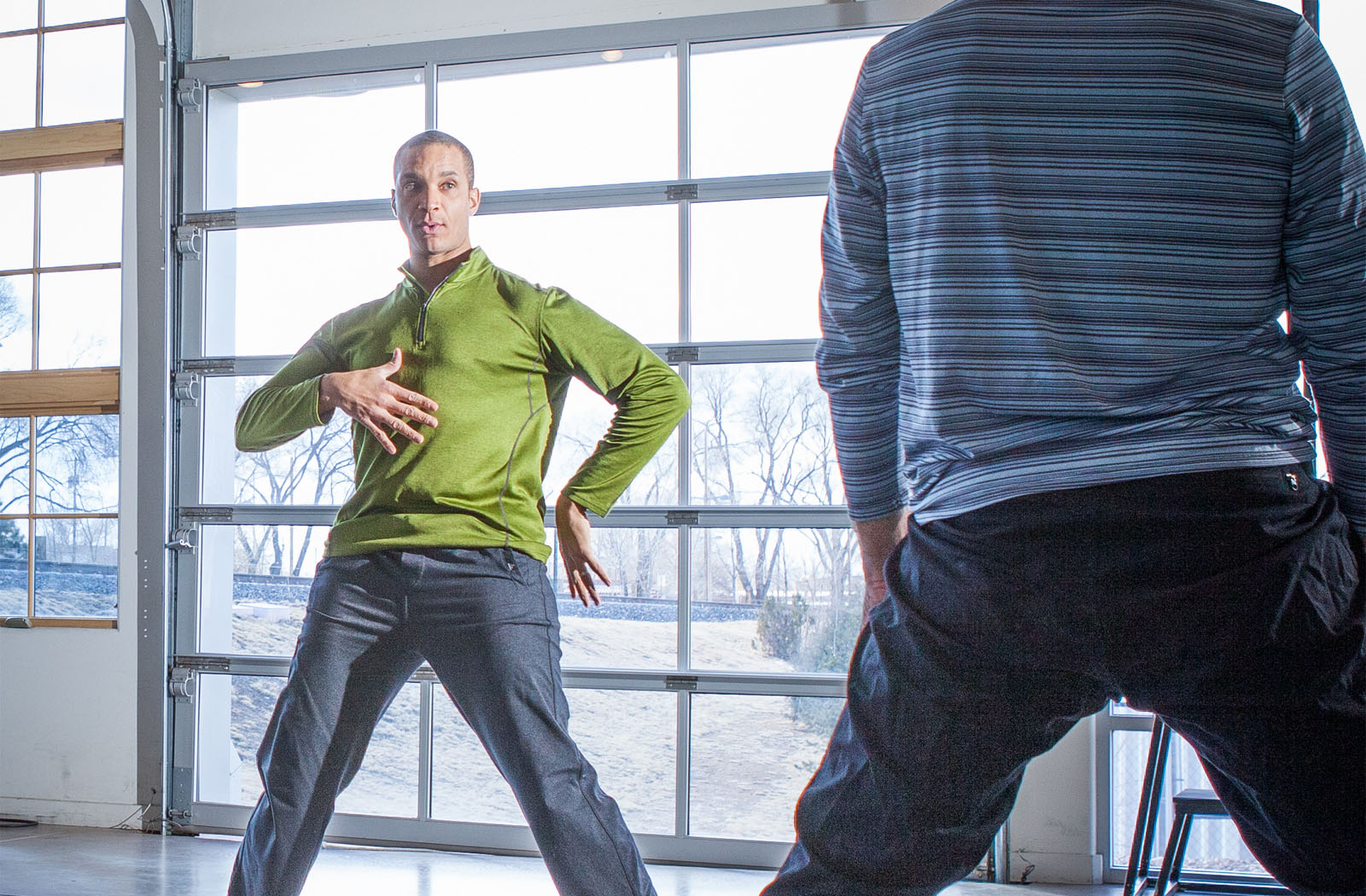
SPECIAL OFFER
A Trial Without Any Commitment
START YOUR IN-HOUSE TRIAL NOW
Personal Training Success in Santa Fe – Dexter
How to Sit Ergonomically and an Exercise to Help Your Shoulders
Sitting At Your Desk Like This Will Help Your Back and Neck Pain
How’s it going? It’s Ekemba from SolCore Fitness again, and I’ve gotten some questions about best posture for sitting. This could be in a desk or in a car. So there are some things you can do to have good posture. I start by saying that sitting, in general, is terrible, anything stagnant on your body is not good, it wants to move around, so that’s why this big shift towards standing desks has been okay, but now you have different problems. So instead of back problems, you have foot problems. Instead of hip problems, you have circulation problems.
Your body wants to move, so get up and move around a lot. Take a walk around the block, do some jumping jacks, move your body around a little bit, break up the time in between sitting down. When you are sitting, you have three main points. First and foremost, you want to look at the top third of the screen, that way then your neck doesn’t go to too much extension or flexion and throws your posture off and throws you spine off. The other two is you want your elbows and hips approximately 90 degrees, that way you don’t have too much compression at the hip and the elbow. And you can see this is a little bad for me, but again, I want to look at the top of the screen, so I’ll sacrifice that a little bit.
Use this Exercise to Open Up Your Shoulders
While you’re sitting there, you can move too. So in this posture, everything rounds, so I can open up my shoulder girdle with what’s called a five-part shoulder. It’s a movement to generally open up the whole shoulder girdle. You start by sitting forward in your chair, getting as tall as possible, reach your arms out to the side and try and push your arms away and try and touch either wall. Staying tall as you push your arms away from your body, you lift up to the ceiling and trying touch the ceiling. You push your arms forward in front of you allowing your shoulders to come down with you, and once they’re parallel, you do a row. You keep your upper arms by your side and you stay tall, you open the doors and close the doors, and you do one arm at a time, try to point towards your opposite shoulder blade, and then you go back out to the other side. So, here’s how it looks all together. Push lift, forward, down, row, open close, one arm at a time, reach and repeat.
Do it you know five to ten times provide periodically throughout the day, and you’ll notice, there are certain parts that are difficult, so opening up or bring your arm behind you, that says to you that you have specific areas you need to stretch. So the best thing I know is myofascial stretching ELDOA to open up different chains of muscles at different joints in your spine, so you sit with a little bit more with better posture. So try that five-part shoulder and good luck to you.
Find out more @
